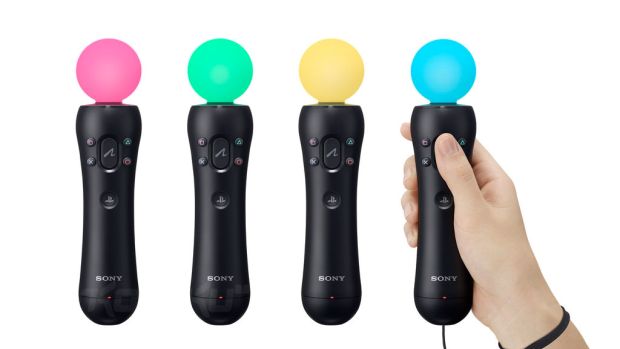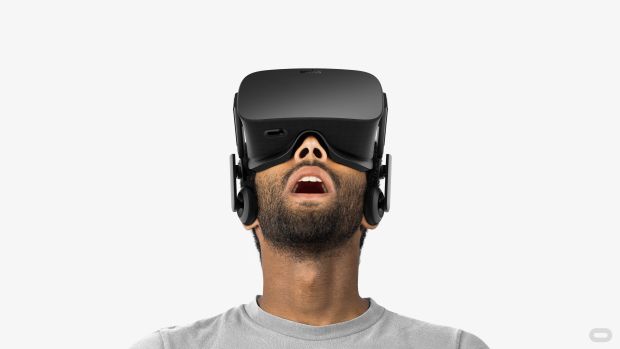
With the announcement of PlayStation VR’s price and release month, the stage has been set for one of the bigger battles in hardware history. Then again, Oculus VR and HTC/Valve pretty much fired the first shots on dating their respective devices. GDC 2016 was all about Sony’s push in the war but what should you know about each headset? Naturally, they’ll have different games (and a whole lot of similar ones) but what differentiates the hardware? Which is better at immersing you in the realm of virtual reality? And which is most likely to hurt your bank balance? Let’s take a look at the top 3 VR headset contenders and find out.
Display Tech
In terms of display technology, the HTC Vive and Oculus Rift are pretty much even. They both feature OLED screens with a 2160×1200 resolution, making for 1080×1200 resolution in each eye with 90 Hz refresh rate. The field of view is 110 degrees as well – it’s the aspect ratio in which they differ the most. The HTC Vive has a 9:5 aspect ratio as compared to the Oculus Rift’s traditional 16:9 aspect ratio.
The PlayStation VR has a refresh rate of 90 to 120 Hz, making it potentially higher than both of its competitors depending on the game, but it falls short in other areas. The OLED display has a 1080p resolution with 960×1080 resolution in each eye and a 100 degree field of view. Oh well – at least Sony mandated that no PlayStation VR title can drop below 60 FPS. There’s that.
Tracking Tech
Perhaps one of the most important features of a VR headset is the tracking it employs. Once again, the HTC Vive and Oculus Rift impress the most in this category.
Weighing 555 grams, the Vive’s headset has 32 sensors in the helmet with more than 70 sensors together with the touch controller. These sensors – your traditional accelerometer, laser position sensors and MEMS gyroscope – work with the Lighthouse system’s bases – that sweep the room with light lasers to pick up objects via photosensors, providing operation in a 15 by 15 feet room and precision up to less than a millimetre. Even more interesting is the fact that the cameras on the front can identify objects in the room and a feed is displayed to the user in order to avoid running into said objects.
Meanwhile, the Oculus Rift weighs about 470 grams and uses a USB IR LED sensor which offers six degrees of freedom (3 axis rotational tracking + 3 axis positional tracking). It is capable of operating in a 5 by 11 feet space. The Constellation technology employed is a rather interesting positional system that uses external IR sensors to track the headset and promises a sub-millimetre of accuracy with pretty much no lag. The IR LED sensor covers the room in question and creates a 3D space around the user, allowing them to walk around and stand up while using Rift. Integrated headphones are provided for a 3D audio effect depending on one’s rotation and position.
By comparison, the PlayStation VR handles its tracking through the PlayStation Camera, providing an operating space of 10 by 10 feet. The headset itself contains 9 LEDs which are tracked by the Camera for 360 degree head movement while a 3D audio effect is in place through its 3.5 mm headphone jack. Like the Oculus Rift, the PlayStation VR makes use of six degrees of freedom for its tracking.
Controllers
There’s really not too much to say here about the controllers involved. The HTC Vive and Oculus Rift both come with their standard handheld controllers, the latter powered by another IR LED system. Rift is also capable of supporting the Xbox One controller. The PlayStation VR supports either PlayStation Move, Sony’s motion-controller, or a DualShock 4.
System Requirements
Of course, here’s where things get dicey for the Vive and Rift. Both headsets require some fairly powerful PC configurations to use effectively.
The HTC Vive requires an Intel Core i5-4590 CPU with 4 GB of RAM and either an NVIDIA GeForce GTX 970 or AMD Radeon R9 290 GPU. The Oculus Rift isn’t much better – it needs Intel i5-4590 or equivalent, 8 GB RAM or higher and either an NVIDIA GTX 970 or AMD R9 290 or better. The above components alone cost a few hundred dollars, not counting the cost of a monitor and, oh, the rest of your PC.
In comparison, the PlayStation VR only really requires a PlayStation 4. Considering the more than 36 million PlayStation 4 consoles out there, not to mention the relative cost compared to a great PC, it would seem as though PlayStation VR is more accessible to your average consumer. The PlayStation 4’s overall hardware set-up – namely a custom AMD octa-core CPU and 8 GB GDDR5 RAM – may not be as powerful as most modern PCs but it’s proven capable of delivering visually arresting experiences. We’ll see how that pans out in the games over the coming year.
Cost
Leaving aside the cost of the PC and the PlayStation 4 required for these VR headsets, they have their own individual costs. The HTC Vive will cost $799 and comes with the base stations, controllers, headset, ear buds and free games like Job Simulator, Fantastic Contraption and Tilt Brush. It releases on April 15th. Valve showcased The Lab at GDC 2016 as a sort of collection of VR demos that players could fool around with on release like space shooter Xortex and tower defense title Longbow. No word on that demo for Portal VR but there’s still Star Wars: Trials on Tatooine VR.
Oculus Rift will cost $599 and comes with the headset, sensor, remote, Xbox One controller and two free games with EVE Valkyrie and Lucky’s Tale. It’s out on March 28th. Future titles that have us excited for the potential of the headset include Adr1ft and Chronos though there are a fair number of games that will be out on PlayStation VR as well like Robinson: The Journey.
The PlayStation VR will retail for $399 but you need to spend money on the PlayStation Camera and PlayStation Move to use it effectively. There will be a bundle retailing for $499 with the headset, Move and Camera along with a game. Thus far, Sony said it’s tracking some 50 titles for release by 2016 end and some 230 developers creating content. We haven’t been too impressed with games like The Modern Zombie Taxi Co. but Rez Infinite and Star Wars Battlefront VR are enough to get us hyped.
Which VR headset looks like the best option to you? Let us know in the comments below.

















